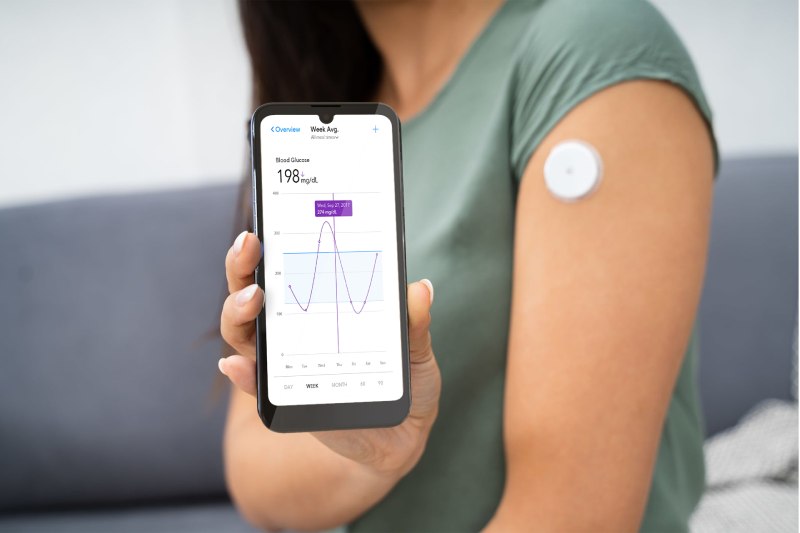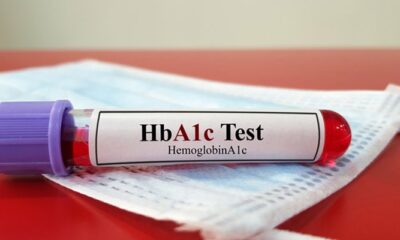Diabetes, a condition marked by elevated blood sugar levels, necessitates constant vigilance. Traditionally, finger pricks and blood sugar meters provided snapshots of blood glucose levels. However, the advent of Continuous Glucose Monitors (CGMs) has revolutionized diabetes management, offering real-time data and empowering you to take control of your health. This comprehensive guide delves into how to use CGMs effectively for better diabetes control, unlocking a new level of freedom and confidence in managing your condition.
Unveiling the Magic of CGMs: Technology at Your Fingertips
A CGM is a small, wearable device with a sensor inserted under the skin, typically on your abdomen or arm. The sensor measures glucose levels in the interstitial fluid (fluid between cells) every few minutes and transmits this data wirelessly to a receiver or a smartphone app. This continuous stream of data provides a far more comprehensive picture of your blood sugar fluctuations compared to sporadic finger pricks.
Components of a CGM System:
- Sensor: The tiny sensor inserted under the skin measures glucose levels in the interstitial fluid.
- Transmitter: This component wirelessly transmits the glucose data from the sensor to the receiver or app.
- Receiver or App: Displays the real-time glucose readings, trends, and alerts, allowing you to monitor your blood sugar levels conveniently.
Benefits of Using CGMs:
- Real-Time Data: Gain continuous glucose data, providing a clearer picture of blood sugar trends and fluctuations throughout the day and night.
- Improved Blood Sugar Control: Real-time data empowers you to make informed decisions about diet, exercise, and medication adjustments for better blood sugar control.
- Reduced Finger Pricks: CGMs significantly reduce the need for finger pricks, offering a more comfortable and convenient monitoring experience.
- Enhanced Hypoglycemia Awareness: CGMs can alert you to potential hypoglycemia (low blood sugar) events, allowing for timely intervention to prevent complications.
- Improved Quality of Life: CGMs can alleviate the constant worry about blood sugar levels, leading to a greater sense of freedom and control over your diabetes.
Embarking on Your CGM Journey: Getting Started
If you’re considering using a CGM, here’s a step-by-step guide to get you started:
- Consult Your Doctor: Discuss your suitability for CGM therapy with your doctor. They can assess your individual needs and determine if a CGM is right for you.
- Choosing the Right CGM System: Several CGM systems are available, each with its unique features and functionalities. Discuss options with your doctor and choose one that best suits your lifestyle and preferences.
- Learning Insertion Techniques: A healthcare professional will provide training on proper sensor insertion and removal techniques.
Mastering the Art of Using Your CGM: Everyday Practices
Once you’ve got your CGM system, here’s how to integrate it seamlessly into your diabetes management routine:
- Calibrating Your CGM: Most CGMs require calibration with finger pricks at specific intervals to ensure accurate readings.
- Interpreting the Data: Familiarize yourself with the data displayed on your receiver or app. Learn to identify trends, patterns, and alerts for optimal use.
- Making Adjustments: Use the real-time data to make informed decisions about your meals, activity levels, and medication needs, in consultation with your doctor.
- Troubleshooting and Maintenance: Learn how to troubleshoot minor technical issues and properly maintain your CGM system for optimal performance.
Unlocking the Potential: Advanced CGM Features
Many CGMs offer advanced features that can further enhance your diabetes management:
- Alerts and Alarms: Set customizable alerts for high and low blood sugar levels to ensure timely intervention and prevent complications.
- Trend Arrows: Identify rising or falling blood sugar trends to anticipate potential issues and take corrective measures.
- Glucose Sharing: Some CGMs allow sharing your glucose data with loved ones or healthcare providers for remote monitoring and support.
- Integration with Insulin Pumps: Certain CGM systems integrate with insulin pumps to create a closed-loop system for automated insulin delivery based on real-time glucose levels.
Living with a CGM: Embracing the Journey
While CGMs offer immense benefits, here are some practical considerations to keep in mind:
- Sensor Wear Time: CGM sensors typically last for a specific duration before needing replacement.
- Sensor Accuracy: CGMs provide estimates of blood sugar levels, and occasional calibration checks with finger pricks are still necessary.
- Cost and Insurance Coverage: CGMs can be expensive, and insurance coverage may vary. Discuss coverage options with your insurance provider.
- Psychological Impact: Continuous data can sometimes lead to anxiety or data overload. It’s crucial to develop healthy coping mechanisms and maintain open communication with your doctor.
- Lifestyle Integration: CGMs can become an extension of yourself. Integrate them seamlessly into your daily routine without letting them dictate your every move.
Beyond the Numbers: Optimizing Your Diabetes Management with a CGM
Here are some additional tips to maximize the benefits of using a CGM:
- Set Realistic Goals: Don’t strive for perfection. Instead, set realistic and achievable goals for blood sugar control with the help of your CGM data.
- Focus on Progress, Not Perfection: Celebrate improvements and progress over time. View setbacks as learning opportunities.
- Maintain a Healthy Lifestyle: A balanced diet, regular exercise, and adequate sleep remain crucial pillars of good diabetes management alongside CGM use.
- Connect with a Diabetes Support Group: Sharing experiences and connecting with others managing diabetes can provide invaluable support and motivation.
The Future of CGM Technology: A Glimpse Ahead
CGM technology is constantly evolving, with exciting advancements on the horizon. Here’s a peek into what the future holds:
- Minimally Invasive and Painless Sensors: Research is ongoing for even smaller, more comfortable, and potentially long-term implantable sensors.
- Enhanced Accuracy: Continuous efforts strive to improve sensor accuracy, potentially reducing the reliance on finger pricks altogether.
- Artificial Intelligence Integration: AI-powered algorithms may interpret CGM data in real-time, suggesting personalized adjustments for optimal blood sugar control.
- Integration with Advanced Therapies: CGMs may seamlessly integrate with future automated insulin delivery systems and other advanced diabetes therapies.
Conclusion: Empowering Yourself with Knowledge and Technology
Continuous Glucose Monitors offer a powerful tool for taking control of your diabetes management. By understanding how CGMs work, utilizing them effectively, and embracing a holistic approach to your health, you can unlock a new level of freedom and live a fulfilling life with well-managed diabetes. Remember, knowledge is power. Partner with your doctor to leverage the potential of CGMs and embark on a journey of empowered diabetes management.

 Diabetology2 weeks ago
Diabetology2 weeks ago
 Diabetology2 weeks ago
Diabetology2 weeks ago
 Diabetology1 week ago
Diabetology1 week ago
 Diabetology1 week ago
Diabetology1 week ago
 Diabetology1 week ago
Diabetology1 week ago
 Diabetology2 weeks ago
Diabetology2 weeks ago
 Diabetology1 week ago
Diabetology1 week ago
 Diabetology2 weeks ago
Diabetology2 weeks ago








